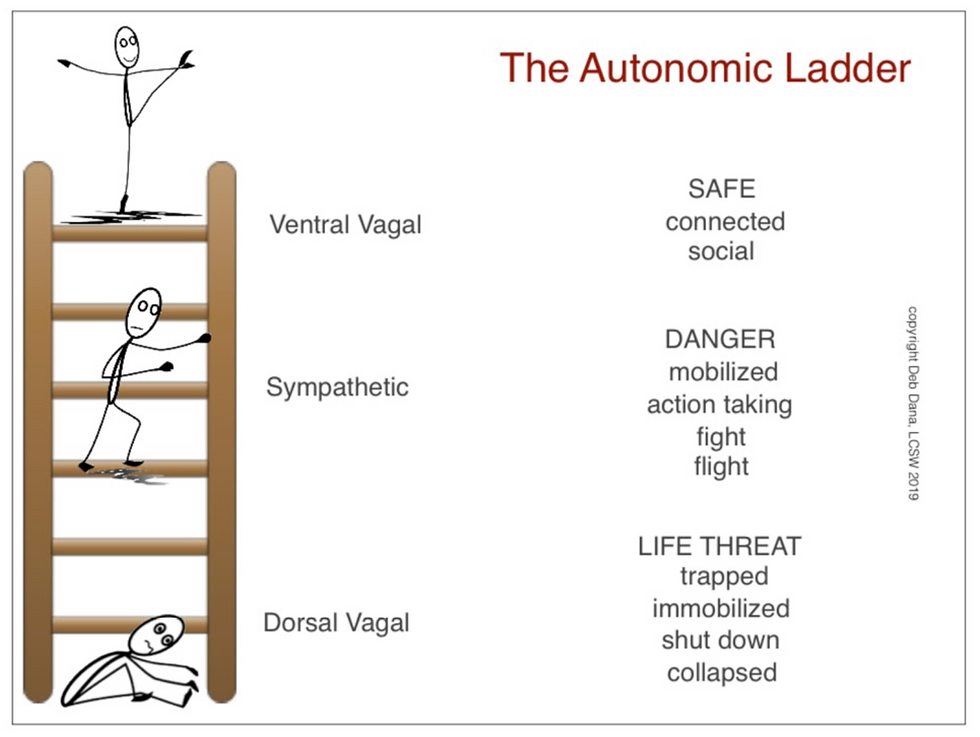
Lately, my clients have been curious about neuroscience and our connection to our vagus nerve. I am intrigued by our nervous system and our cranial nerves so I am happy they asked! Did you know that our nervous system is comprised of 12 cranial nerves? In this article, I will highlight the 10th cranial nerve, the vagus nerve.
The Vagus Nerve...What Is It?
The vagus nerve plays an important role in the mind-body connection and is often addressed in somatic therapy. It is the longest cranial nerve and is responsible for regulating many bodily functions, including heart rate, digestion, and breathing. It is also involved in the body’s stress response and helps to regulate the autonomic nervous system.
Somatic Therapy
Somatic therapy works through the body and the mind to help us heal from or manage past traumas and other overwhelming emotional experiences. This body-mind approach allows us to create a sense of safety within our bodies so that we can effectively process adverse past experiences. (Levine & Fredrick, 2023). By regulating the vagus nerve, somatic therapy can help individuals achieve optimal health.
The Polyvagal Theory
Last spring, as part of my Craniosacral Therapy practice, I attended a somatic emotional release class through The Upledger Institute. At the conference I learned about Dr. Steven Porges. I then attended his interview at the Beyond The Dura conference. Dr. Porges founded The Polyvagal Theory, which describes how the vagus nerve controls the body’s fight, flight, freeze, and fawn systems. Dr. Porges likens this to a ladder in which each rung represents a different response system. You can use the polyvagal ladder to identify your current “state” so that you can take the steps needed to regulate the body. Deb Dana created this picture of the ladder:

The Polyvagal Theory explains that mental and physical health require the turning off of the autonomic nervous system’s defense. To do this, we must become more aware of the cues that our nervous system requires to feel safe. You can read more about this here.
Understanding the vagus nerve and The Polyvagal Theory has been extremely helpful to my own healing journey as well as to the work I do with my clients.
Experience Vagal Nerve Regulation for Yourself

In my practice, I help my clients improve posture, incorporate optimal breathing and stretching techniques, and focus on opening diaphragm restrictions. All of this directly helps improve vagus nerve function. Through all my modalities, I bring awareness to my clients (including the awareness that impacts the vagus nerve) to help them achieve optimal health.
I invite you to my table to experience for yourself the profound impact that healing work can have on your body and mind. If you have any questions about the vagus nerve and how I incorporate it into my practice, please don’t hesitate to contact me. May you be soft with yourself during your day.
Blessings,
Briana Pontius
Vagus Nerve Massage
These vagus nerve massages can help with stress and anxiety. When done regularly, vagus nerve massage can help heal trauma by regulating your nervous system.
Place the tip of your index finger at the soft point right behind your earlobes and massage for 30 seconds.
Gently Pinch the inside and outside of your ear and move your ears in a gentle circular motion for 30 seconds.
Make a peace sign with your index and middle fingers and place them on your face right outside of the ear and right behind the ear, and gently massage up and down for 30 seconds.
Gently Caress your sternocleidomastoid muscles for 30 seconds. These are the muscles that stick out when you turn your head to one side. We have one on the left and one on the right sides of our necks!
Bring your hands to your heart and focus on your breath for 30 seconds.
References:
Levine, P. A., & Frederick, A. (2023). Waking the tiger: Healing trauma: The innate capacity to transform overwhelming experiences. North Atlantic Books
Porges, S. W. (2011). Polyvagal theory: Neurophysiological foundations of emotions, attachment, communication, and self-regulation / Stephen W. Porges.
.jpg)



Comments